
views
Forming your Group

Brainstorm a theme. Before you start making a club, you need to come up with a subject. If drawing is your hobby and you want to meet more artists, that can be your theme. Keep the theme as broad as possible. You can make a group about knit tags, but it may be difficult for you to find enough people who share that interest to grow a group out of it. Instead, make your group about knitting in general and share your love of knit tags during group time. Consider what clubs exist in your area. Does your theme fill a need in your community? Search online or in gathering grounds such as a local community center, churches, or schools for similar clubs and avoid copying their theme.

Find interested people. Most clubs start small with a few interested people. You can do this with a few of your friends. It doesn’t matter if these people intend on staying long-term if they help you get the club up and running until you can recruit more members. Other options include advertisements such as flyers posted on bulletin boards and telephone poles, posts to social media, and words in town bulletins and newspapers. Try asking among acquaintances such as fellow church members. Someone may refer someone they know to your group. School groups usually require a few interested people to be recognized and receive funding. Some colleges, for instance, require a minimum of ten members. Check with your school.

Find an advisor. Many schools require you to have an advisor to lead the club, grow it, and make it successful. If you’re forming a club outside of school, you aren’t required to have the help, but a school advisor can help you register your club, find a meeting location, provide guest speakers, and more. Choose an adult who will take responsibility, stay interested in the group, and be responsive to your group’s needs. Usually you can find this person among teachers you’re familiar with or professors in your study branch.

Choose a location. Once you have a few people who will attend your first meeting, settle upon a location. You can do this by asking your prospective members for a place that’s good for them. Often this location is someone’s house or a restaurant since new groups don’t have many members or money to spend on renting public space. If you’re in school, your advisor or the school can refer you to their classroom or a room where there won’t be a class around the time you want to meet. When your group grows, you can consider renting larger spots such as a room at a church or a community center.
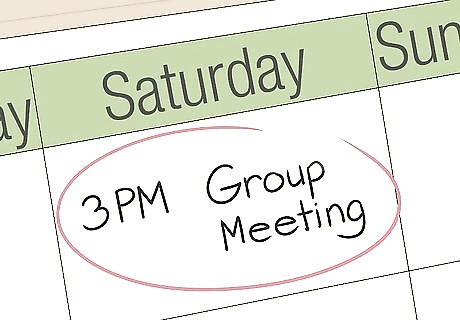
Pick a time. Now that you’ve got a place to meet, set a time. If you already have several members interested in joining the group, discuss with them a time that’s best for the majority of people. Often this will be after school or work or evenings on weekdays. It’s important to get as many people involved in the group as possible in order to establish the group and help it grow. Once the group starts expanding, you’ll be less able to plan around the schedules of every member.
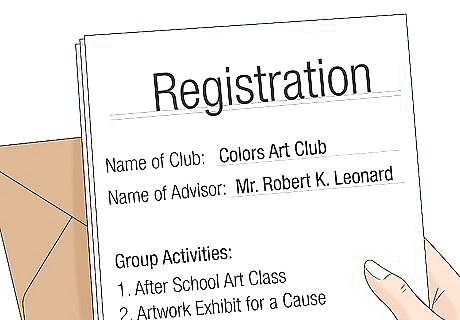
Submit your registration. Check with your school to find out what form you need to submit to be recognized as a group. If you’re doing this outside of a school, you won’t have to do this, but everyone else needs to respond to a club commissioner or outline the group on an official application. Clearly write out the name of the club and what its purpose. You will likely need information such as your faculty advisor’s name, budgeting concerns, and group activities. Remember to make the information on the form as clear as possible. Confusing the commissioner or the school board that will vote on your application will surely cause your application to be rejected.
Conducting the First Meeting

Break the ice. Before you start the meeting, you’ll want to make sure everyone’s settled and as comfortable as possible. To do this, you can simply introduce yourself, but it helps to have an icebreaker activity. This can include anything like having people introduce themselves and state their experience with the group’s theme and why they’re there, such as having three years experience coding computer games for fun, but feel free to get creative. Creative icebreakers, for example, can be tossing a beach ball around and having people add a word to a story or answer a question you’ve written on a section of the ball. Don’t pressure shy members to speak. Reassure your group members that they can pass if they don’t feel comfortable sharing.
Define the club’s purpose. Chances are you already have in mind what the group is about and have discussed this a little with prospective members. However, bring these ideas to the first meeting. Discuss with your members again why you are starting this club. Why do you want to create this club? Write these answers into a basic mission statement. For instance, if your club is about photography, you may wish to connect to others over a love of photography. Write a mission statement saying exactly that.

Determine the club’s long-term goals. Once you have a basic idea of the club’s purpose, use it to determine what the club should accomplish and what the members will do together. The club members will share a common interest in the subject, but your club will benefit from having something to achieve and activities that allow members to have fun. Talk to your members about what they want to get out of your meetings. For example, for a photography club, you can discuss photographs, improve your knowledge of photography, and go on trips together.

Decide what resources members need. Many clubs require nothing more than one’s presence. However, some clubs require extra material. If you want to start a book club, members have to have their own copy of the books you discuss. For other groups, such as ones about social anxiety, you can print out copies of lessons and worksheets and provide the material yourself.

Introduce the leadership. While conducting the first meeting, introduce yourself to unfamiliar members. Welcome them to the group. Tell them who you are, why you’ve created the group, and what experience you have with the subject. Then introduce anyone else responsible for the group and have them share the same facts about themselves. A social group usually lacks a formal structure. Groups that charge membership, raise funds, or get involved in politics may have to declare their type of group to the government. As your group grows, consider appointing other members to handle tasks such as a deputy leader to back up your role, a treasurer to handle expenses, a secretary to contact members, and a membership manager to keep track of group membership.

Define group membership. What does it mean to be a member of this group and what is membership like? Many social clubs have an open door or simple rules like having social anxiety to be in a social anxiety group. Other clubs may demand qualifications such as advanced computer coding skills, being a certain age, and so forth. Is there a charge to be a member? What benefits to members receive for being a part of this group? Make sure these rules are clearly communicated.
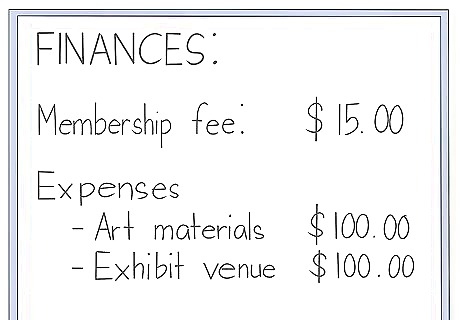
Outline the group’s finances. Many social groups won’t need to do this since many groups have members show up as they please and pay for themselves. A ski group can have members pay their own way on trips, for meals, and chip in for snacks. Other groups need to identify what money they bring in, such as membership fees, expenses, how the money will be used, and draft a budget. You as a leader may wish to do this for yourself. Include any officers you’ve appointed. You’ll need to consider your own budget, such as what you can afford to spend on meeting rooms, food, advertising, and materials for the meetings.
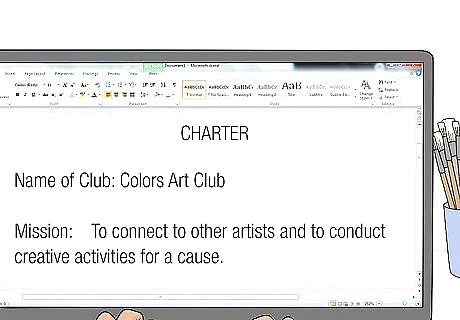
Make a charter. A charter is a document that establishes the rules of the club. If your club is small, for fun, and has little structure outside of yourself as leader, you can simply write down all the rules. Outline the group’s purpose, leadership, and rules such as how members should act and respect one another. Larger and more organized groups need to outline issues such as leadership position terms, how voting on group issues works, and how many members need to be at official meetings.
Growing Your Group
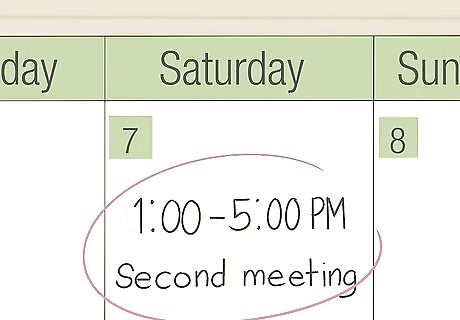
Decide when you’ll meet next. With your members, come up with a time you’ll meet next and, if possible, future meetings. A group may choose to meet every Sunday, for instance. Consistency is good for keeping all members on the same page, not forgetting meetings and having a set time to indicate when they refer others to the group. A time schedule doesn’t have to be set immediately. It may take a few meetings to come up with a good day and time and afterwards you may still need to switch to accommodate others.

Establish meeting structure. The introductory meeting of the group is a good time to indicate what you want the group meeting to be like while also listening to what other members want. For the next meeting, start breaking the time into segments. The first part of your book club can be about sharing how your week went while having snacks. The second part can be discussion over the assigned reading. The third part can be about addressing any concerns or suggestions.

Recruit new members. If you want a larger group, decide how you’ll grow your group. Consider placing advertisements on bulletin boards around town, starting a page on social media, making a website, and having members recruit new members. The more the word of your group spreads, the better chance you’ll have of finding new people who keep the group going and provide new insight. Sign up for a website such as Meetup.com. There is a fee for listing the group, but the listing may make your group easier to find for interested people.

Conduct member outreach. In order to keep old members and attract new ones, it helps to get everyone in contact with one another. One way of doing this is a social media page. Another is a member’s forum. You can also design a newsletter you can email to your members. By creating contact, members talk to one another, which is appealing to potential members and helps you share information while promoting group solidarity.

















Comments
0 comment